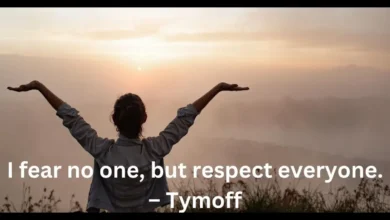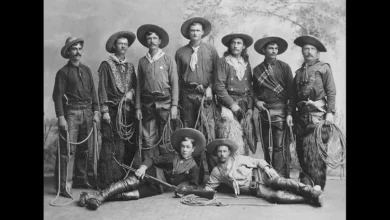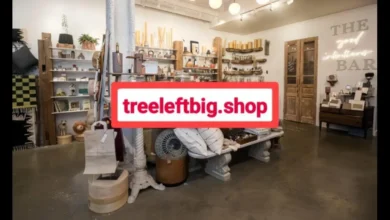Tools of the Trade: Essential Supplies for drawing:oldj_7nsvxk= skull

Introduction to Drawing Supplies
drawing:oldj_7nsvxk= skull is an age-old art form that transcends time and culture. It’s a way to express your thoughts, emotions, and creativity through lines on paper. Whether you’re sketching a realistic portrait or exploring abstract shapes, having the right supplies can make all the difference in your artistic journey.
But what exactly do you need to get started? From basic tools like pencils and erasers to advanced materials like charcoal and colored pencils, each item plays a unique role in shaping your artwork. In this guide, we’ll explore essential supplies for drawing:oldj_7nsvxk= skull – an intriguing subject that challenges artists at every skill level.
Let’s dive into the world of drawing supplies!
Basic Supplies for Drawing
Every artist needs a solid foundation when it comes to drawing supplies. The essentials start with pencils. These versatile tools come in various grades, allowing for different line weights and shading techniques.
Next on the list are erasers. A good eraser can make all the difference. It helps refine details and correct mistakes without damaging your paper.
Speaking of paper, that’s another fundamental supply you shouldn’t overlook. Different types of paper can influence how your medium interacts with the surface, so choose wisely based on what you’re drawing.
These basic supplies set the stage for creativity. They allow you to express ideas freely while experimenting with styles and techniques as you develop your skills further into more advanced tools like charcoal or colored pencils later on.
A. Pencils
When it comes to drawing, pencils are the backbone of your toolkit. They come in various grades, ranging from hard (H) to soft (B), allowing for a wide range of line qualities and shading techniques.
Harder pencils create fine lines perfect for detailed sketches or outlines. Meanwhile, softer pencils offer richer darks that bring depth and texture to your work. Experimenting with different types can help you discover which fits your style best.
A good set typically includes a blend of H and B grades. This versatility makes it easier to switch between precise detail work and bold strokes as needed.
Also consider mechanical pencils for consistent line width; they’re especially handy when working on intricate designs like drawing:oldj_7nsvxk= skull illustrations. Always keep your pencils sharp for optimal performance—freshly sharpened points yield cleaner lines every time you draw!
B. Erasers
Erasers are often underestimated in the world of drawing. However, they play a crucial role in refining your artwork. A good eraser can make all the difference.
There are various types of erasers available for artists. The classic pink rubber eraser is great for general use but tends to leave smudges. For precision work, a vinyl or plastic eraser works wonders, lifting graphite cleanly without damaging the paper.
Kneaded erasers offer unique benefits as well. They can be molded into different shapes and sizes, allowing you to erase small details with ease. Their gentle touch makes them perfect for shading techniques too.
When choosing an eraser, consider its intended purpose. Some artists prefer softer options that allow subtle adjustments while others may opt for firmer ones suited for bold corrections. The right choice can enhance your creative expression drastically.
C. Paper
Choosing the right paper is crucial for any drawing project, especially when focusing on intricate subjects like drawing:oldj_7nsvxk= skull . Different types of paper can influence your artistic expression.
For pencil drawings, a smooth surface allows for fine details and shading. Look for papers labeled as “drawing” or “sketch.” They often have just the right texture to capture subtle nuances.
If you’re working with charcoal or pastels, opt for heavier-weight paper with a bit more tooth. This texture helps grip the medium better and prevents smudging.
Don’t forget about toned paper! It adds depth and dimension to your drawings. The color can enhance highlights and shadows alike, creating striking contrasts in your artwork.
Experimentation is key; different mediums interact uniquely with various papers. Find what suits your style best, whether it’s crisp white sheets or warm-toned surfaces that inspire creativity.
Advanced Tools for Drawing
When you’re ready to elevate your drawing skills, advanced tools can make a significant difference. Charcoal is a favorite among artists for its rich texture and deep blacks. It allows for dramatic contrasts, perfect for capturing the intricate details of complex subjects like drawing:oldj_7nsvxk= skull.
Graphite sticks offer another level of versatility. drawing:oldj_7nsvxk= skull Available in various hardness levels, they provide smooth application and are ideal for both broad strokes and fine lines. This adaptability makes them essential when sketching or shading.
Colored pencils bring vibrancy into play. They allow artists to explore hues while maintaining precision. By layering different colors, you can achieve stunning depth and realism in your artwork.
Each tool serves a unique purpose, adding character to your creations while allowing personal expression through every stroke. With these advanced supplies at hand, the possibilities are endless as you dive deeper into the world of drawing.
A. Charcoal
Charcoal is a favorite among artists for its rich, deep blacks and incredible versatility. It allows for dramatic shading and striking contrasts in your drawings. Unlike pencils, charcoal can create a range of textures and tones with just a flick of the wrist.
There are different types of charcoal to choose from: vine charcoal, drawing:oldj_7nsvxk= skull compressed charcoal, and woodless options. Each type offers unique characteristics that can enhance your artwork.
Vine charcoal is soft and easy to erase, making it perfect for initial sketches or loose studies. Compressed charcoal delivers more intensity but requires precision in application due to its darker pigmentation.
Experimenting with various techniques can yield stunning results. Smudging blends edges beautifully while layering different charcoals creates depth. Embrace the process; each stroke brings you closer to mastering this expressive medium!
B. Graphite Sticks
Graphite sticks are a fantastic addition to any artist’s toolkit. They offer a rich, dark line that can enhance sketches and detailed drawings alike.
One of their main advantages is the versatility they provide. You can use them for both broad strokes and fine details. This flexibility makes graphite sticks perfect for varying techniques or styles.
The texture of these sticks allows for smooth application on paper, which brings your artwork to life. Artists often enjoy blending them easily with other mediums.
Additionally, graphite sticks come in different hardness levels. drawing:oldj_7nsvxk= skull This range gives you control over shading and depth in your work. Whether you’re creating shadows or highlights, the right stick can make all the difference.
When working on intricate pieces like drawing:oldj_7nsvxk= skull studies, having quality graphite at your disposal elevates your art significantly.
C. Colored Pencils
Colored pencils offer a vibrant way to express creativity. They come in a variety of hues, allowing artists to create stunning and intricate designs.
Unlike traditional graphite, colored pencils blend color beautifully. Layering and mixing shades can produce depth and dimension in your drawings. This technique is especially useful for rendering lifelike skin tones or natural landscapes.
Their versatility makes them suitable for various art styles. Whether you’re sketching detailed portraits or whimsical illustrations, they adapt well to different techniques.
Additionally, colored pencils are portable and easy to use anywhere—ideal for on-the-go artists seeking inspiration from their surroundings.
Choosing high-quality brands can elevate your work significantly. Look for smooth application and rich pigmentation that enhances each stroke you make with every pencil on your paper canvas.
Specialized Tools for Drawing
When it comes to specialized tools for drawing, artists often seek precision and versatility. drawing:oldj_7nsvxk= skull Blending stumps are a must-have. These tapered tools allow you to smudge and soften pencil or charcoal lines seamlessly, creating smooth transitions in shading.
Kneaded erasers offer another layer of control. They can be shaped into any form, making them perfect for lifting highlights without damaging the paper. Their pliability is especially handy when working on intricate details.
Electric erasers take convenience to a new level. With just a touch of a button, they remove unwanted marks with precision and speed. This tool is particularly useful for those who work with fine lines or detailed drawings.
These specialized supplies elevate your artwork by enhancing techniques that basic tools simply cannot achieve alone. Experimenting with each one opens up new possibilities in your creative process!
A. Blending Stumps
Blending stumps are an artist’s secret weapon. These handy tools help create smooth transitions between tones and textures in your drawings. Made from tightly rolled paper, they resemble small blunt-ended pencils.
Using a blending stump can elevate your work dramatically. They allow for precise control when merging graphite or charcoal, which is especially useful when working on detailed sketches like drawing:oldj_7nsvxk= skull. The subtlety you achieve with them adds depth to your artwork.
Additionally, blending stumps come in various sizes. drawing:oldj_7nsvxk= skull This variety allows artists to select the perfect tool based on their needs—whether it’s a large area or intricate details.
Maintaining these tools is simple too; just wipe off excess material after use to keep them clean and ready for the next masterpiece! Embracing blending stumps can truly enhance your drawing process, making it more enjoyable and rewarding as you explore different techniques.
B. Kneaded Eraser
The kneaded eraser is a must-have for any drawing enthusiast. Its unique texture sets it apart from traditional erasers. You can mold it into various shapes, making it ideal for precise corrections.
This versatile tool lifts graphite without smudging your work. It absorbs pencil marks rather than rubbing them away. This means you can achieve softer lines and highlights in your drawings.
Artists appreciate its ability to create subtle transitions in shading. With just a gentle touch, you can lighten specific areas or remove unwanted details seamlessly.
Moreover, it’s reusable and long-lasting, which makes it an economical choice too! When it gets dirty, simply knead it again to restore its effectiveness.
Adding a kneaded eraser to your art supplies opens up new creative possibilities. It’s perfect for those intricate pieces where detail matters most.
C. Electric Eraser
An electric eraser can be a game changer for artists. drawing:oldj_7nsvxk= skull It offers precision that traditional erasers often lack. With a simple push of a button, you can effortlessly lift graphite from paper without damaging the surface.
This tool is perfect for creating highlights or correcting small mistakes on your drawings. The fine tip allows you to erase with accuracy, making it ideal for detailed work, especially when drawing intricate shapes like drawing:oldj_7nsvxk= skull .
Going beyond mere corrections, an electric eraser adds flair to your artistic process. It opens up possibilities for blending and shading techniques that enhance your overall piece. The easy handling ensures that you won’t lose control while working on delicate areas.
Incorporating this tool into your collection elevates your skillset and brings efficiency to every stroke. An electric eraser truly transforms how artists approach their medium—making art more enjoyable and less frustrating.
Other Essential Supplies for Drawing
When diving into the world of drawing, there are a few other essential supplies that can elevate your experience and creativity. A sketchbook is one such item. It provides a personal space for experimentation without the pressure of creating a perfect piece.
Additionally, you might want to consider various types of rulers or straight edges. These tools help maintain precision in your work, especially when drafting geometric shapes or outlines.
A sharpener is another must-have for any artist using pencils. Keeping your pencils finely sharpened ensures clean lines and more detailed work.
Don’t underestimate the importance of good lighting while drawing. Natural light is ideal, but if that’s not an option, invest in an adjustable lamp with daylight bulbs to reduce eye strain and improve visibility on your canvas.
With these essentials at hand—along with all the basic and advanced tools—you’re well-equipped to explore different styles and techniques in drawing:oldj_7nsvxk= skull representations or any subject matter that captures your imagination! Each tool plays its part in helping you express yourself creatively as you bring ideas to life on paper.





